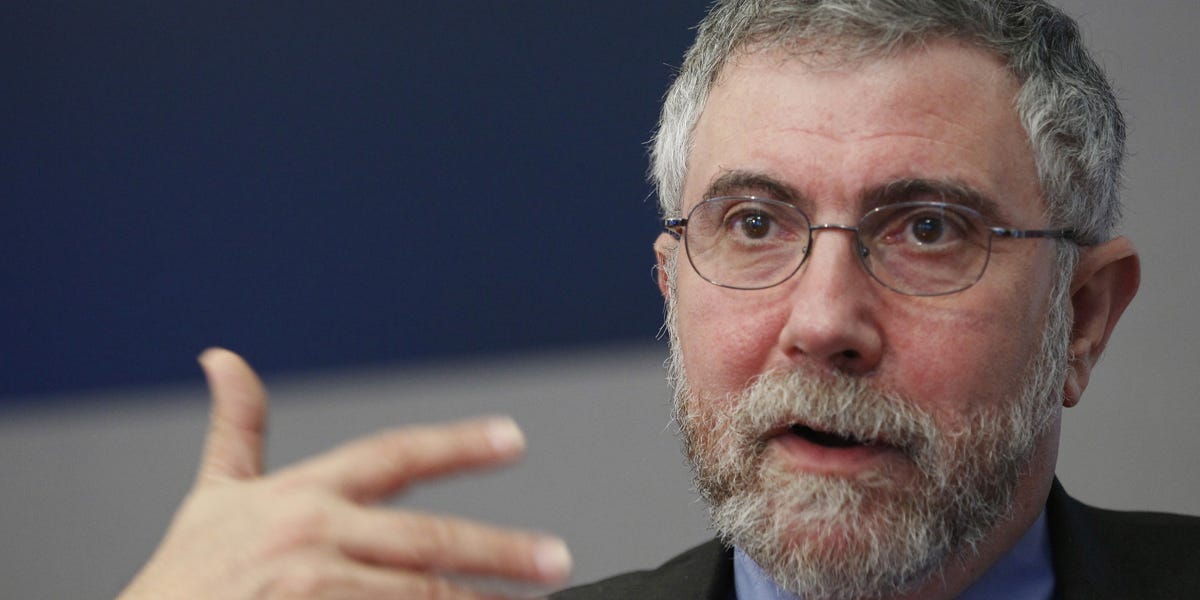Consumer inflation data strongly indicates the US is on its way to a soft landing, Paul Krugman said. That means the economy could see normal levels of inflation without a spike in unemployment. On Wednesday, CPI data showed prices rose 3% in June from a year ago, down from 2022’s peak of 9%. Loading Something is loading.
Thanks for signing up!
Access your favorite topics in a personalized feed while you’re on the go.
The latest consumer inflation data indicates the US economy may actually achieve a soft landing, Paul Krugman wrote in a New York Times opinion piece.
For the Nobel laureate economist, that means the economy could see a return to normal levels of inflation without a spike in unemployment.
“We haven’t touched down on the runway yet, and a soft landing isn’t guaranteed,” Krugman said. “But it now looks amazingly within reach.”
To back his claim, he cited Wednesday’s consumer price index data, which increased 3% in June from a year ago, lower than Wall Street’s forecasts and a continued slowdown from 2022’s peak rate of 9%.
The CPI report “strongly suggested” a soft landing is ahead and now looks more likely than not, he added.
And digging deeper into the numbers, the cooling trend in inflation actually looks more upbeat. Krugman noted that the headline inflation rate has been distorted by the earlier spike in energy prices, and the core rate of inflation, which leaves out food and energy, was distorted by work-from-home shifts that lifted shelter costs.
So instead, he looks to the “supercore” rate — that is, core inflation without shelter or used cars. The measure stood at 3.5% over the past year, and at a 2.7% annual rate over the past six months, nearing the Federal Reserve’s 2% target rate.
“Others prefer different measures, but they’re all telling the same story: a rapid decline in underlying inflation even though the unemployment rate is the same as it was a year ago,” he wrote. Unemployment stood at 3.6% as of June.
Whereas some economists once warned that reining in inflation would necessitate a long stretch of high unemployment, Krugman figures that the economy’s streak of running hot had muted the adverse effects of hiking interest rates.
Additionally, cooling inflation may also be the result of COVID-19 disruptions finally disappearing.
But a turn for the worse is not off the table, Krugman noted. One factor to consider is the idea that the latest CPI data is made up of noisy statistics that may be skewing perspectives. And some economists warn that dealing with the remaining margin of high inflation may be more painful. But Krugman is skeptical.
“All I can say is that we’ve been hearing such warnings about the ‘last mile’ in fighting inflation for quite a while, and so far underlying inflation has just continued to fall,” he said.
Still, Krugman acknowledged a recession is still possible even if it isn’t needed to get inflation to 2%, noting that monetary policy tends to have delayed effects.
All in all, however, June’s inflation data creates a strong case for a soft landing, which could prompt a needed evaluation of economic policy of the past few years:
“The 2021-22 burst of inflation was a shock, but if it turns out to have been temporary and ends without major suffering, it will be hard to avoid the conclusion that recent economic policy has, all things considered, been pretty darn good,” Krugman concluded.
